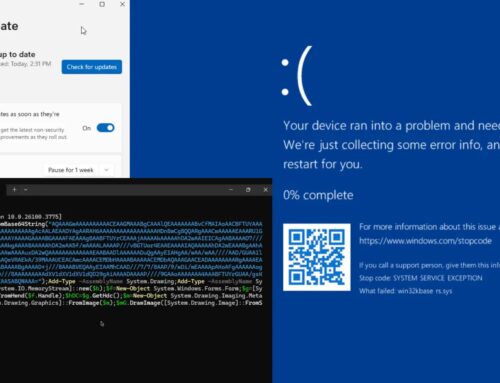
Silver Fox Hackers Using Weaponized Google Translate Tools to Deploy Windows Malware
The Silver Fox Threat: Weaponized Google Translate Tools Deploying Winos Trojan
A sophisticated new malware campaign is targeting users through weaponized versions of popular online tools, particularly fake Google Translate interfaces. Dubbed by researchers as the “Silver Fox” campaign, this operation represents a significant evolution in malware distribution, exploiting user trust in familiar applications to deliver the insidious Winos Trojan.
This attack highlights a concerning trend where threat actors are moving beyond traditional phishing links, instead crafting elaborate social engineering schemes that leverage ostensibly legitimate platforms. The meticulous planning involved, from the initial decoy to the final payload delivery, underscores the adaptability and resourcefulness of modern cybercriminals.
Anatomy of the Silver Fox Attack Chain
The Silver Fox campaign employs a multi-stage attack chain designed to evade detection and ensure successful compromise. This process begins with a deceptive user interaction and culminates in the deployment of the Winos Trojan on the victim’s system.
- Initial Lure: The attack frequently starts with social engineering, enticing users to interact with what appears to be a legitimate Google Translate interface. These interfaces are meticulously crafted to mimic the authentic service, often hosted on look-alike domains or delivered via compromised websites.
- Weaponized Interface: Unlike a simple phishing page, these are not static imitations. They are “weaponized” with malicious code that, upon interaction (e.g., clicking a translation button or attempting to download a translation), triggers the next stage of the attack.
- Payload Delivery: Instead of providing the expected translation service, the interface initiates the download of a malicious file, often disguised as a legitimate application update, a translated document, or even a supposed installer for the translation tool itself. This file is the dropper for the Winos Trojan.
- Winos Trojan Deployment: Once executed, the dropper deploys the Winos Trojan, a potent piece of Windows malware capable of various nefarious activities, including data exfiltration, remote access, and further malware deployment. The Winos Trojan is known for its persistence mechanisms, making it challenging to remove once established.
The Winos Trojan: Capabilities and Impact
The Winos Trojan is a versatile and dangerous piece of malware that poses significant risks to compromised systems and networks. Its capabilities extend far beyond simple data theft, allowing attackers deep control over the infected machine.
- Data Exfiltration: Winos can systematically collect sensitive information, including credentials, financial data, personal documents, and intellectual property.
- Remote Access: It establishes a backdoor, granting attackers persistent remote access to the victim’s system, enabling further reconnaissance, lateral movement within a network, and direct manipulation of files and processes.
- Keylogging: The Trojan implements keylogging functionalities, capturing every keystroke a user types, including passwords, banking details, and confidential communications.
- System Manipulation: Attackers can use Winos to modify system configurations, install additional malicious software, or even disrupt system operations.
The specific capabilities of Winos can vary based on the version and the attacker’s objectives. However, its primary goal is to provide unauthorized access and control, leading to potential data breaches, financial fraud, and significant operational disruption.
Remediation Actions and Protective Measures
Defending against sophisticated campaigns like Silver Fox requires a multi-layered approach focusing on user education, robust security practices, and advanced threat detection.
- User Education and Awareness:
- Verify URLs: Always scrutinize the URL of any website, especially those requesting downloads or sensitive information. Look for legitimate domain names and HTTPS.
- Beware of Unsolicited Downloads: Be highly suspicious of any website that automatically initiates a download or prompts for an unexpected file download.
- Think Before Clicking: Educate users on the dangers of clicking suspicious links, even if they appear to come from trusted sources or mimic legitimate services.
- Technical Controls:
- Endpoint Detection and Response (EDR): Implement EDR solutions to monitor endpoint activity for suspicious behavior, detect malware, and respond to threats in real-time.
- Next-Generation Antivirus (NGAV): Deploy NGAV solutions that utilize behavioral analysis and machine learning to identify and block new and evolving threats, including those delivered by sophisticated droppers.
- Web Content Filtering: Utilize web filters to block access to known malicious domains and categorize suspicious websites.
- Network Segmentation: Segment networks to limit the lateral movement of malware in case of a breach.
- Regular Patching: Ensure all operating systems, applications, and browsers are kept up-to-date with the latest security patches to mitigate known vulnerabilities.
- Strong Password Policies and MFA: Enforce strong, unique passwords and multi-factor authentication (MFA) across all accounts to prevent unauthorized access even if credentials are compromised.
- Email Security Gateways: Employ advanced email security solutions to filter out phishing attempts and malicious attachments.
- Incident Response Plan:
- Develop and regularly test an incident response plan to ensure a swift and effective response in the event of a compromise. This includes steps for containment, eradication, recovery, and post-incident analysis.
Tools for Detection and Mitigation
Several tools can aid in detecting and mitigating threats posed by campaigns like Silver Fox and the Winos Trojan.
| Tool Name | Purpose | Link |
|---|---|---|
| Virustotal | Online scanner for analyzing suspicious files and URLs against multiple antivirus engines. | https://www.virustotal.com/ |
| Malwarebytes Endpoint Detection and Response | Provides advanced threat detection, incident response, and remediation for endpoints. | https://www.malwarebytes.com/business/edr |
| Proofpoint Email Protection | Comprehensive email security solution to defend against phishing, malware, and other email-borne threats. | https://www.proofpoint.com/us/products/email-protection |
| Snort | Open-source network intrusion detection and prevention system (IDS/IPS) for real-time traffic analysis. | https://www.snort.org/ |
| Wireshark | Network protocol analyzer that allows detailed inspection of network traffic for anomaly detection. | https://www.wireshark.org/ |
Conclusion
The Silver Fox campaign, with its weaponized Google Translate interfaces and the deployment of the Winos Trojan, underscores the evolving nature of cyber threats. Attackers are increasingly leveraging user trust in common services and sophisticated social engineering to bypass traditional security measures. Organizations and individuals must remain vigilant, prioritize cybersecurity education, and implement robust technical controls to defend against these advanced persistent threats. Proactive security postures and a healthy skepticism towards unexpected online interactions are paramount in protecting digital assets.





